Pest Guide
At W.A. Stone Termite & Pest Control Inc., we not only provide top-quality pest control, but we also want to help educate you on the pests that could invade your home. We know how frustrating, and costly, it can be living with unwanted guests, not to mention the danger, so we have provided a quick guide below that outlines common pests that can occupy your home and whether they are a just nuisance or pose a real threat to you and your family’s health. Of course, if you have a question about a bug, rodent, spider, or other pests, just give us a call or email us a picture and we can help you identify it.
Common Pests
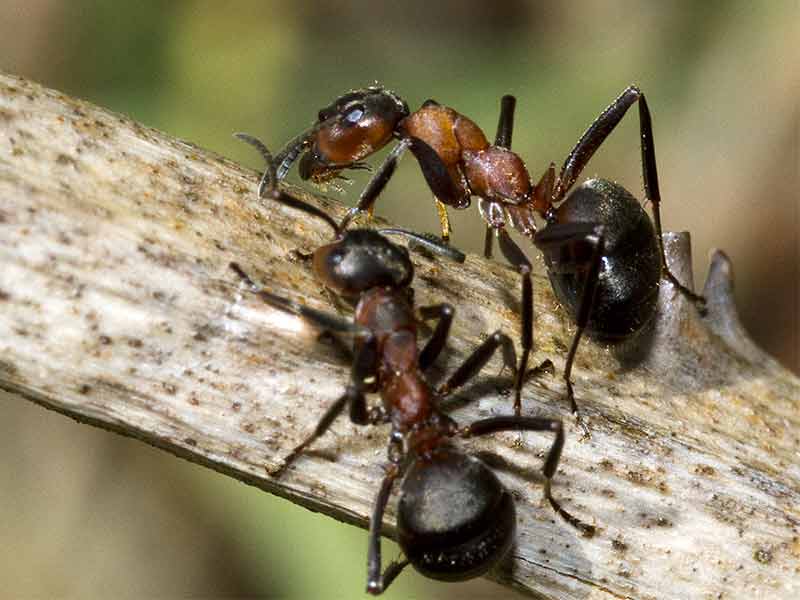
Acrobat Ants
Acrobat Ants range in color from light-yellowish-brown to black. The queen grows to about three-eighths inch, while workers grow one-eighth inch in length. They emit a foul-smelling odor when threatened or are disturbed. These ants do bite when directly handled, can damage property, and contaminate food sources in kitchens and pantries. They enter through your home’s foundation, gaps found around windows and doors and nest in high moisture places, like your basement or laundry room.
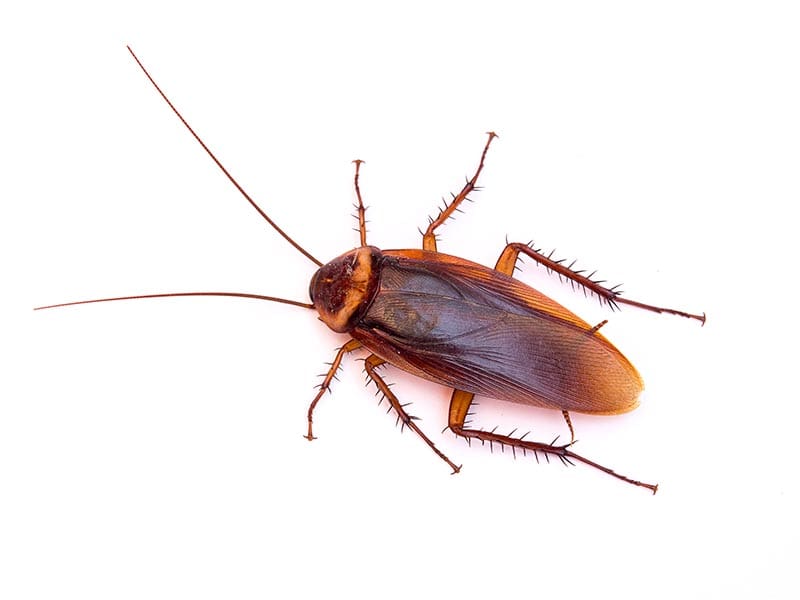
American Roaches
American Roaches have six legs and an oval-shaped body. They are reddish brown and have a yellowish colored outline on the back of their head. Both males and females can fly, and adults grow to about two inches. They can spread 30 types of bacteria and are especially dangerous to young children, due to when they shed their skin it can trigger allergies and asthma attacks. They enter home through drains, pipes, and through spaces underneath doors and around windows. They hide in warm, damp areas such as bathrooms, kitchens, and basements.
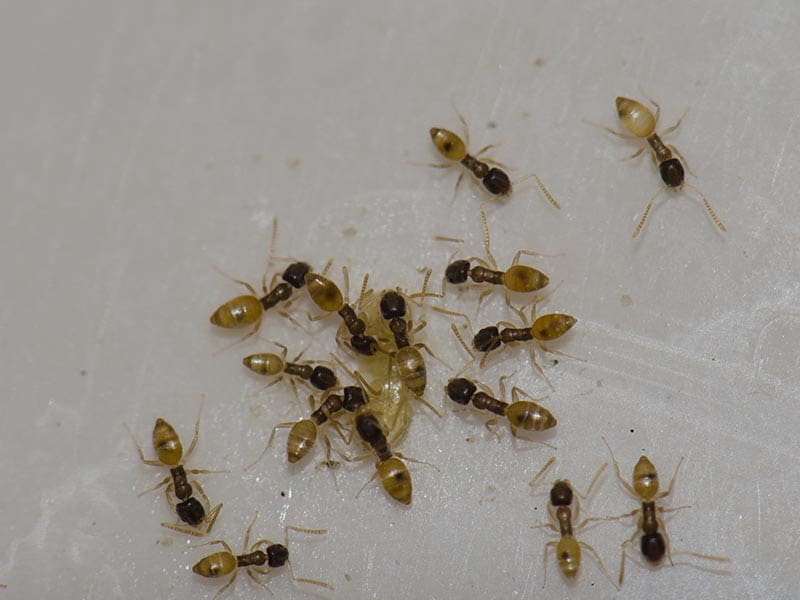
Argentine Ants
Argentine ants range from shiny dark brown to shiny black. Adults only grow to between one-sixteenth to a quarter-inch in length. These ants are known for their extensive colonies and emit a musty odor when crushed. The nest in moist environments link along sidewalks and landscaping ties, mulch, and stone. If too wet, they will move into your home to forage for food. They are challenging to eliminate without professional treatment.
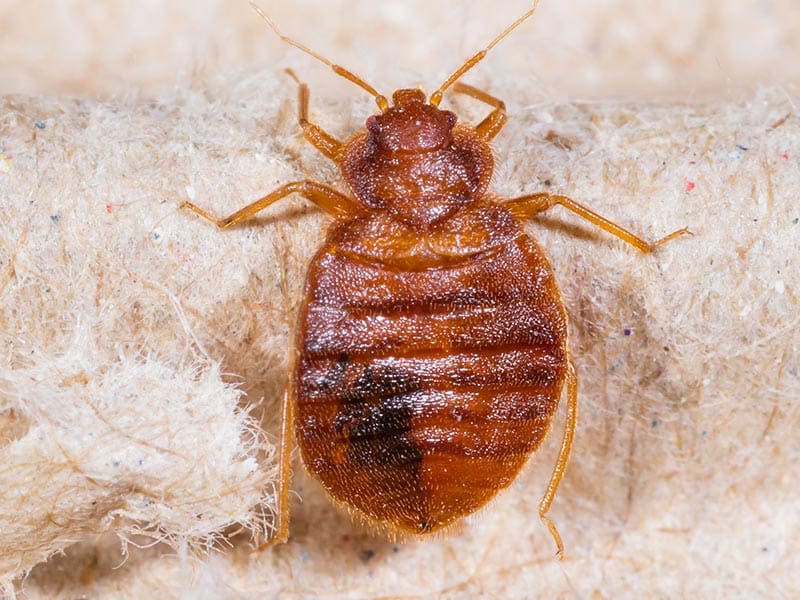
Bed Bugs
Bed bugs have a flat oval body and only grow to about a quarter-inch in length. They are reddish brown and become darker right after feeding. They do not fly or jump. These insects don’t transmit any dangerous disease but bite and feed on you while you are sleeping, which leaves behind small welts. Bed bugs can be found crawling along walls, wooden furniture, along baseboards, in the seams of mattresses and box springs. Bed bugs can be picked up from any place with a large group of people, including hotels, airports, libraries, shopping centers, and more.
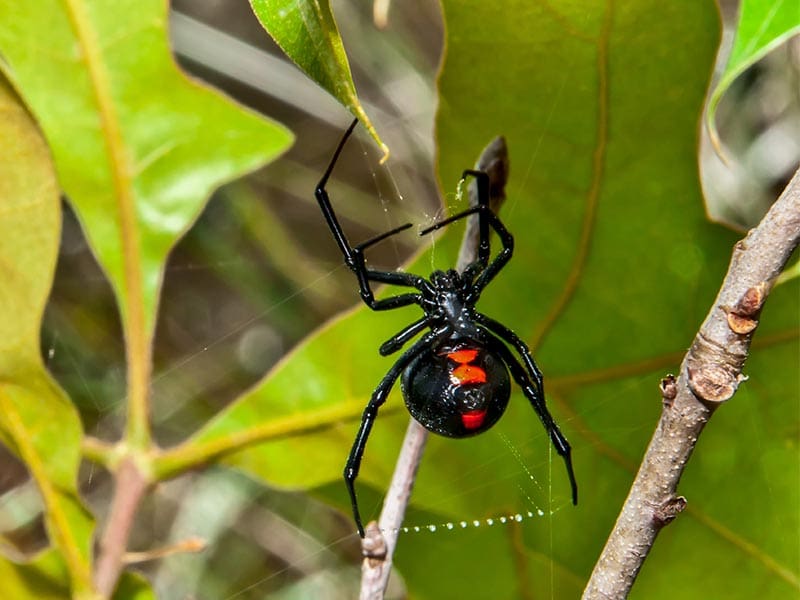
Black Widow Spiders
Black widows are active when the temperature is 70 degrees or higher, but they can survive lower temperatures with the right conditions. Black widow spiders spin irregular webs, which they build at night near ground level. Outdoors, black widow spiders commonly live in protected areas like under stones and in firewood piles. Indoors, black widows prefer cluttered areas of garages, crawl spaces. Symptoms of a black widow spider bite include fever, increased blood pressure, sweating and nausea. Fatalities are unlikely, as long as proper medical treatment is sought in a timely manner. If you notice black widows or signs of infestation, contact a professional immediately for a proper course of black widow spider control.
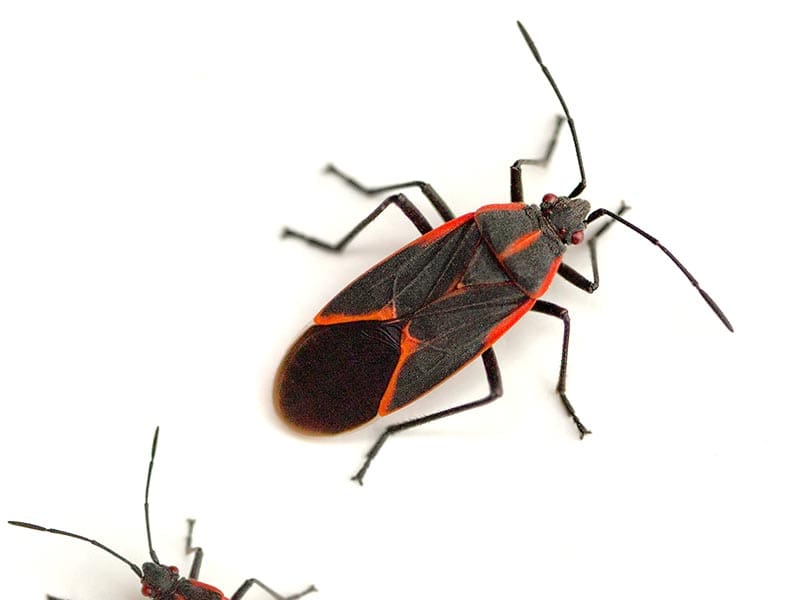
Box Elder Bugs
Box Elders have black body with orange trim and grow to about a half-inch. They are winged and not considered dangerous to people. During the spring and summer months, box elders live on box elder trees and seed-bearing trees. However, when Fall rolls around, they are attracted to the warm exterior walls and buildings, where they can fit their way into cracks and crevices in your home.
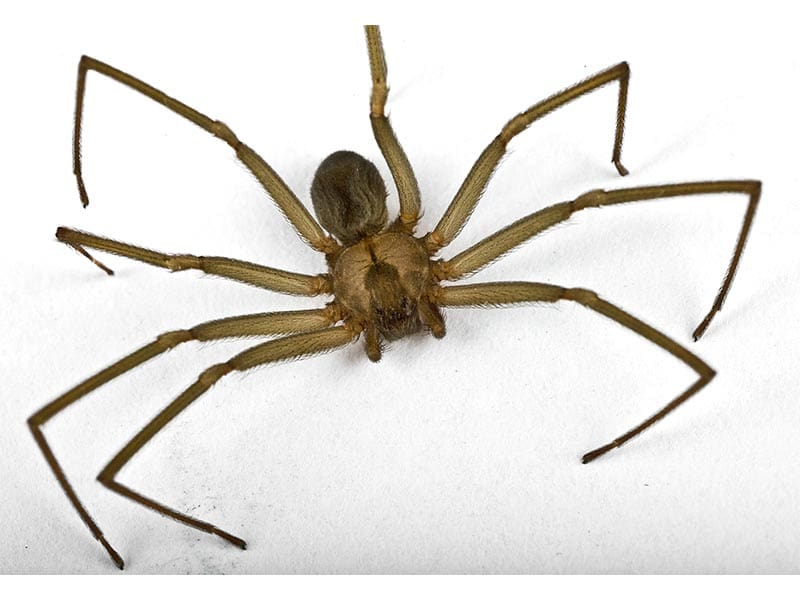
Brown Recluse Spiders
Brown Recluse Brown Recluse Spiders range from light-gray to dark brown and have an oblong abdomen covered in gray hairs. Their bodies grow to about the size of a quarter. These spiders don’t go out of their way to bite people, but being bitten can lead to serious health consequences, including the tissue around the bite to ulcerate and die. They usually live in wood piles, sheds, leaf piles, and fallen logs or trees. They make their way inside homes looking for food and are found in closets, basements, crawl spaces, cabinets, and other places where they aren’t frequently disturbed.
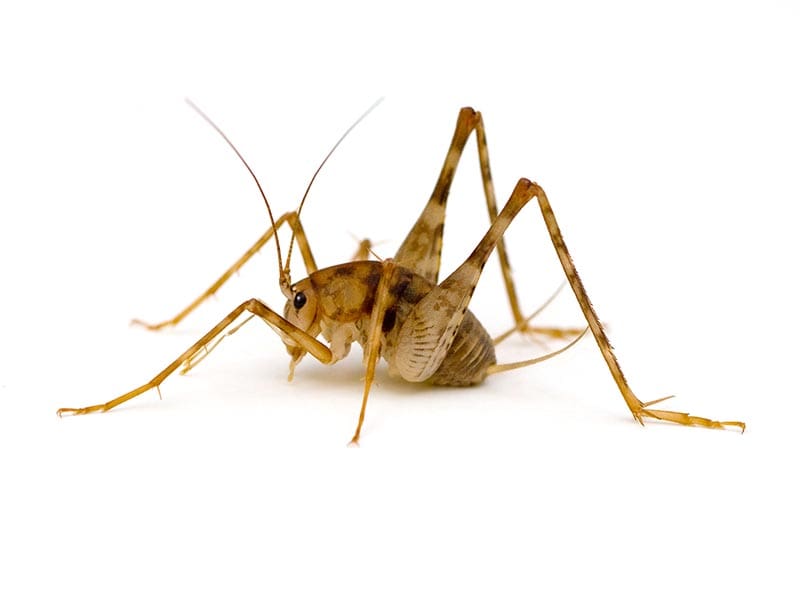
Camel Cricket
Camel Crickets are a large species of cricket that grow between a half-inch to one-and-a-half inch in length. They are light to dark brown with dark banding on their bodies and legs. They are not dangerous to people and do not bite. Instead, they feed on upholstered furniture, linens, curtains, and clothing. They enjoy cool, damp, moist areas like mulch, wood piles, fallen trees, and decks. If it becomes too hot and dry, they will make their way inside and make their home in your basement, crawl space, and laundry rooms.
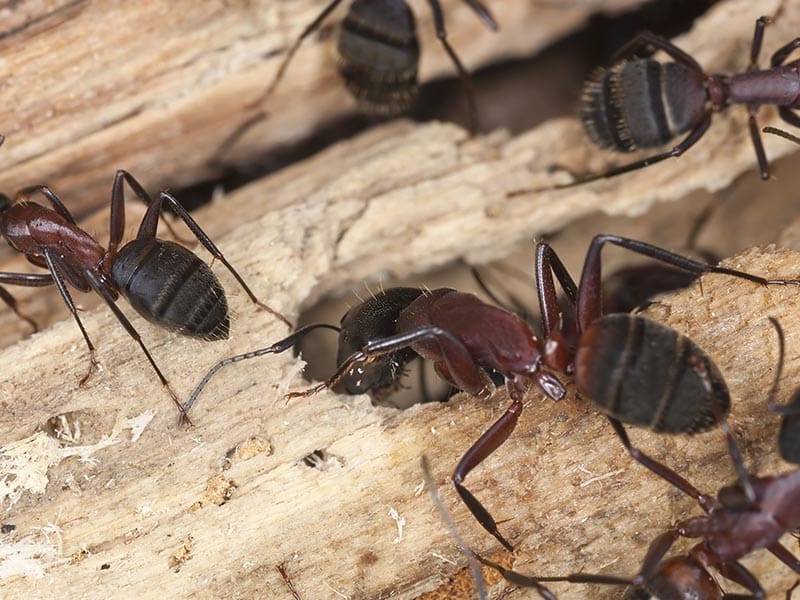
Carpenter Ants
Carpenter Ants are a large species of ant that grow between five-eighths inch to a half-inch in length, with queens growing up to an inch. Carpenter ants are black but can be red, yellow, or a combination of colors. They are the ability to bite, but usually only occur when the nest has been disturbed. These ants set up shop inside moist and water damaged wood and create tunnels, which can compromise the structural integrity of your home if left untreated.
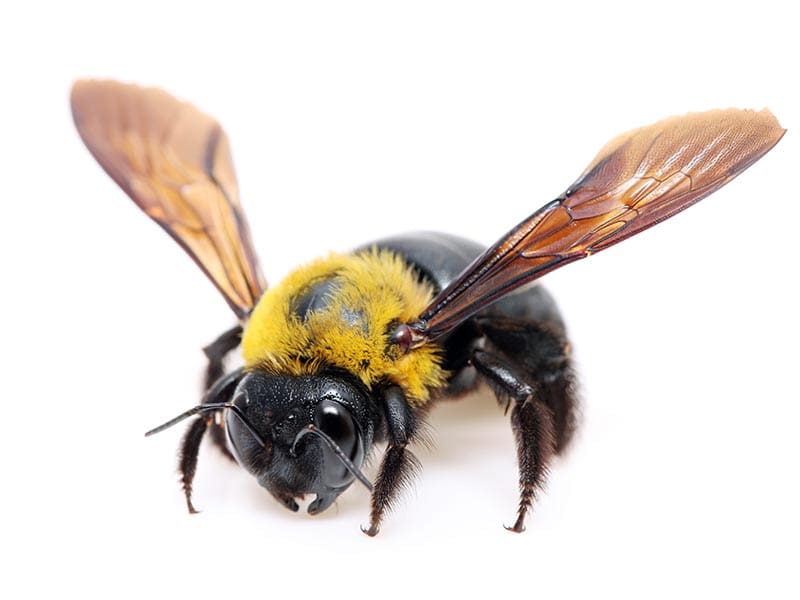
Carpenter Bees
Carpenter Bees look like bumblebees but lack stripes and have a smooth hairless abdomen. They grow to a quarter-inch to one inch in length, which is large within the bee species. Female bees have stinger, but they are otherwise docile and rarely use it. Their venom is strong enough to trigger an allergic reaction in people. Much like Carpenter Ants, they create tunnels within wooden structures and cause structural damage. They will nest in decks, roof soffits, sheds, porches, and wooden outdoor furniture.
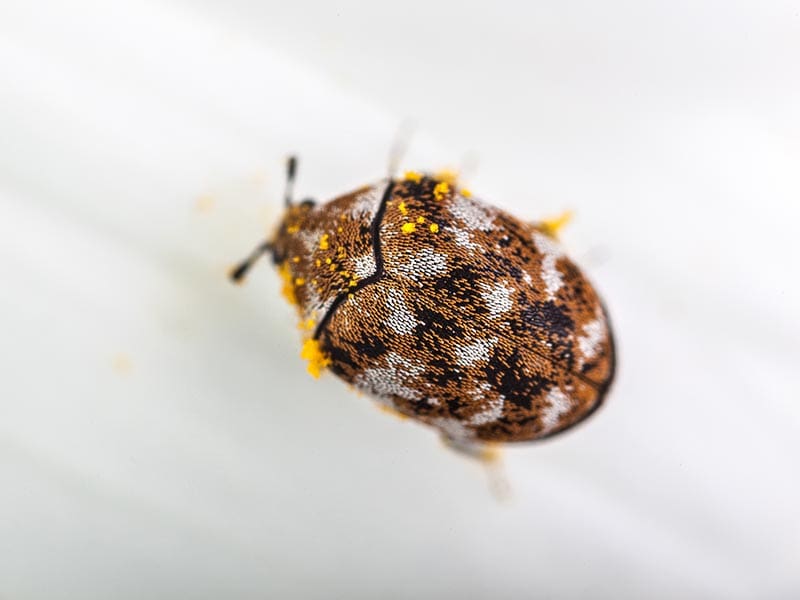
Carpet Beetles
Carpet Beetles have the same shape as a ladybug, but they are brown or tan with white and tan stripes. They grow between an eighth-inch to three-sixteenth inch in length. They enter through small cracks and crevices found in exterior walls and the foundation. They are not dangerous to people or bite, but they can contaminate food. Their larvae will feed on clothing, blankets, and furniture. The larvae are also attracted by the oils found in human hair and will crawl across people as they sleep to feed on their hair.
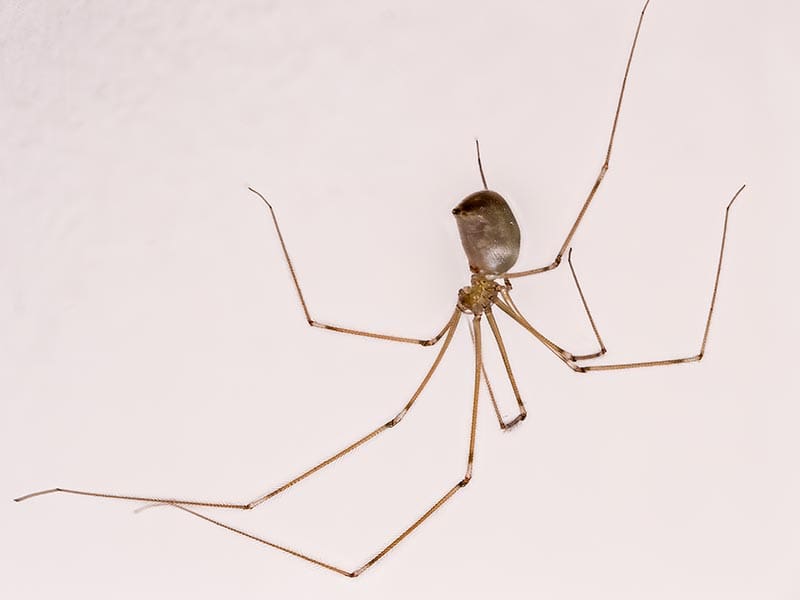
Cellar Spiders
Cellar Spiders, or Daddy Long Legs – are often pale yellow, light brown, or grayish color with very long and skinny legs. They grow to about a quarter-inch to three-eighths inch. While they can bite, they are not able to pierce skin, and the venom is not strong enough to impact a person. These spiders like to make their home inside barns, sheds, garages, and basements, and they will often live close to each other.
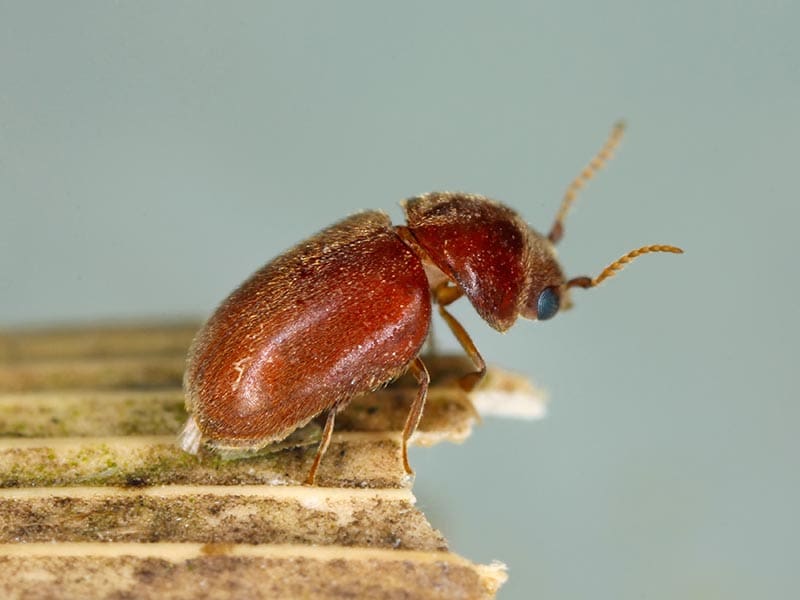
Cigarette Beetles
Cigarette Beetles can grow to be an eighth-inch in length and are usually light brown. Adult beetles have wings and are considered strong fliers and very active in low-light situations. They get their name from attacking tobacco stores. They will infect a wide variety of products, including books, dried flowers, spices, leather, silk, and dry pet food. They are not known to bite people or pets.
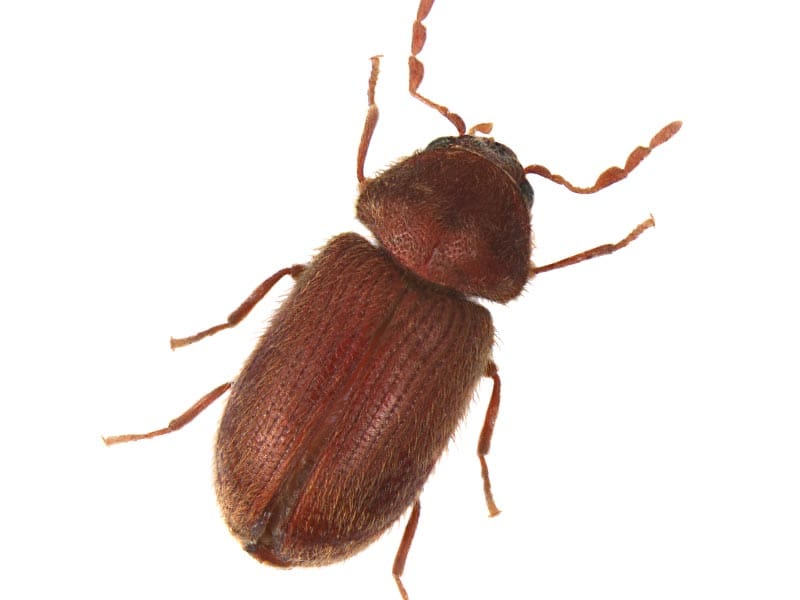
Drugstore Beetles
Drugstore Beetles are reddish-brown to brown in color and grow between one-sixteenth to one-eighth inch in length. They are not considered dangerous to people and don’t bite, but will feed and contaminate any dried plant or animal product. They are strong fliers and are attracted to light, which can lead them into your home and lay their eggs in your dry food storage.
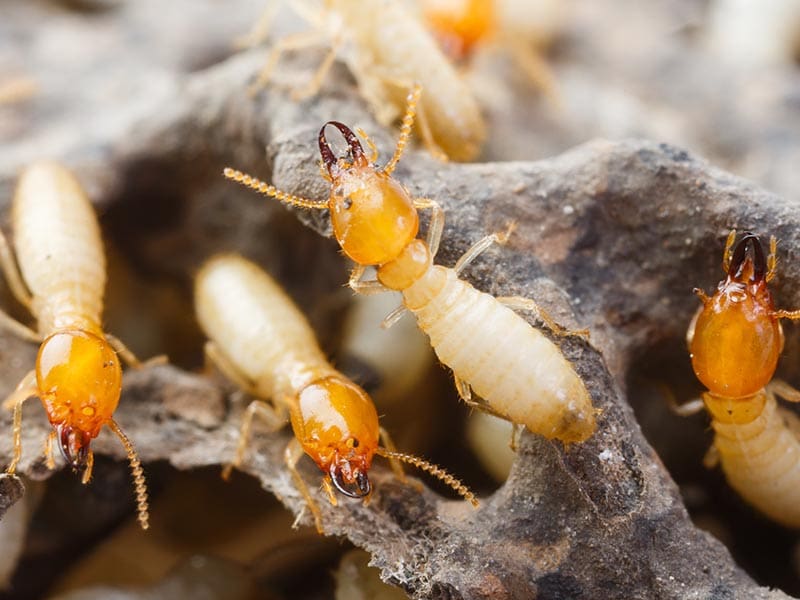
Drywood Termites
Drywood Termites grow between one-sixteenth to one-eighth inch in length and are red in appearance. This type of termite attacks wood products of all kinds, including structural timbers and woodwork in your home or business, as well as furniture. Unlike the subterranean termite, which needs soil moisture to live, Drywood Termites nest and live directly inside the wood and boring tunnels.
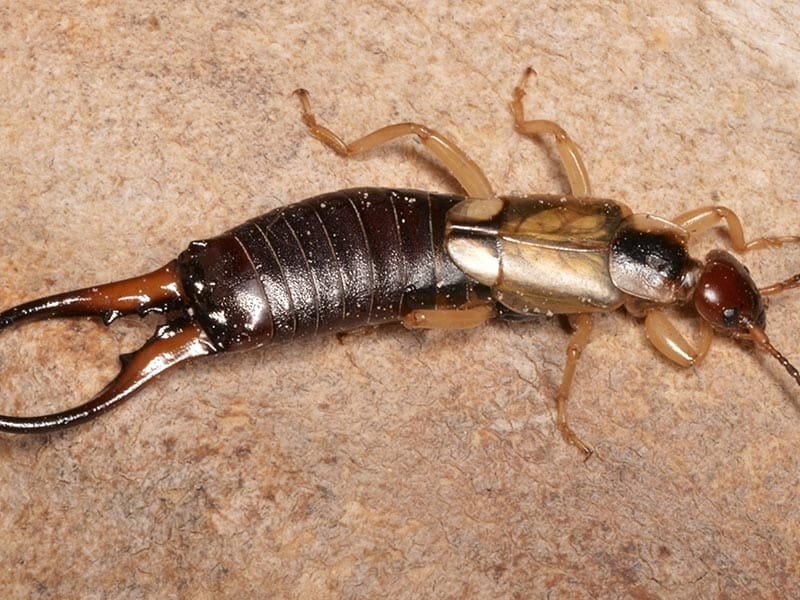
Earwigs
Earwigs, or pincher bugs, grow to about five-eighths inch in length are dark brown to reddish-brown in appearance. They can be winged or wingless. They pose no significant health risk to people, and its pinchers aren’t strong enough to cause pain. They are a nocturnal creature typically found in damp, dark areas underneath rocks, mulch, and piles of grass or leaves. When temperatures become too high or dry, they will make their way inside your home in basements, bathrooms, and underneath potted plants.
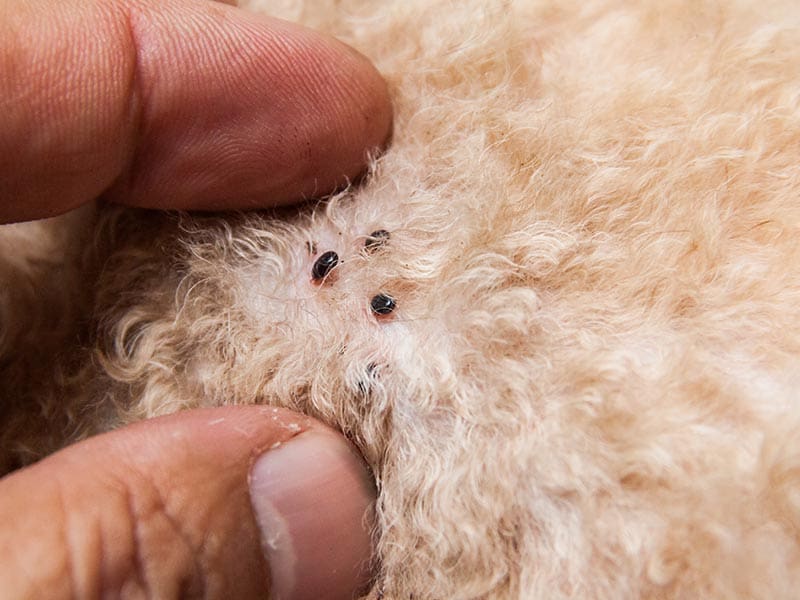
Fleas
Fleas are dark brown and have a tough flat body, which makes it difficult to crush them. Adults grow to about one-eighth inch in length. Fleas are dangerous to people and pets, as they can spread dangerous diseases such as dog tapeworm, rodent tapeworm, and murine typhus. Pets and even wild animals can introduce fleas onto your property. Fleas breed quickly and can become very difficult to eliminate without professional help.
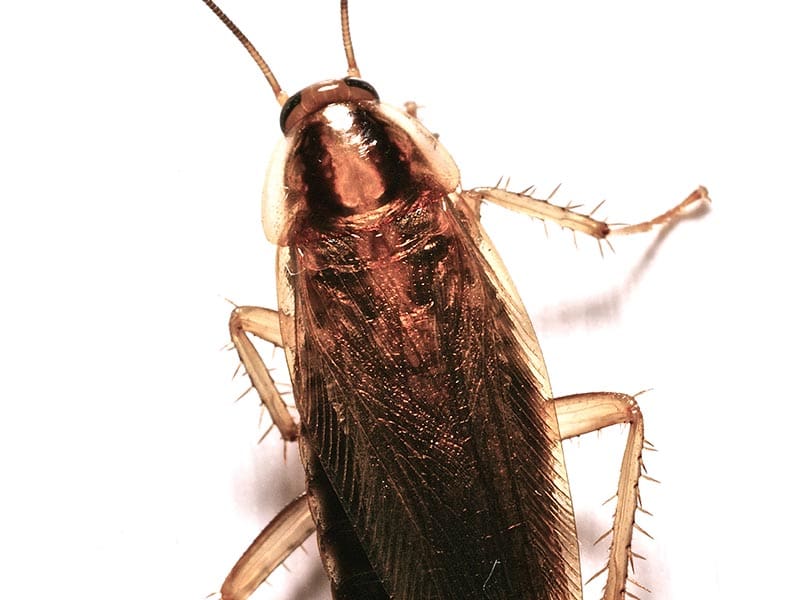
German Roaches
Ranging from half-inch to five-eighths inch in length, German Roaches also feature a tan and light brown body. They are winged but are flightless. Although rare, these roaches bite in cases of large infestations or when their food supply is low. Since they travel through garbage, feces, and sewers, they often carry salmonella, and E.coli, while their saliva and feces can trigger severe asthma attacks in people. They often make their way into your home foraging for food and can enter in boxes, packages, and luggage. They are mostly found in kitchens, bathrooms, and other dark, damp places.
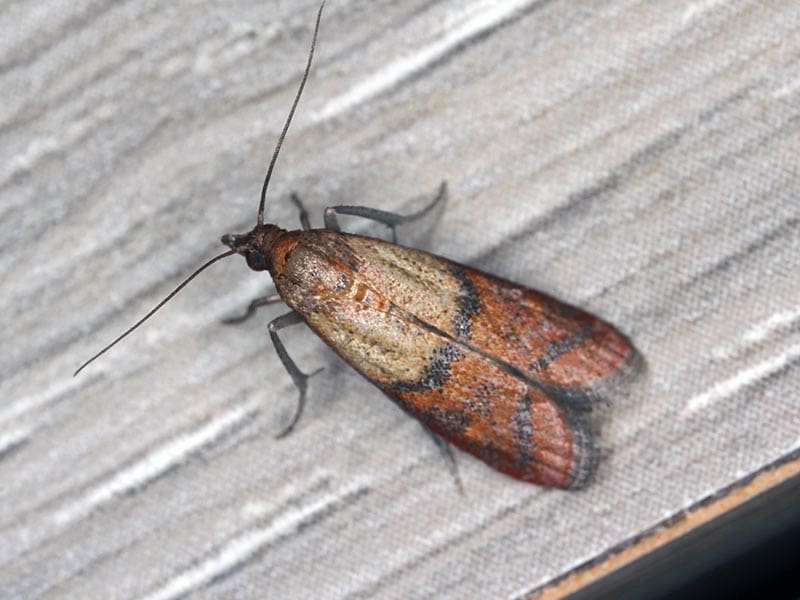
Indian Meal Moths
Indian Meal Moths are winged with the rear half of the wing being bronze, dark gray, or copper, with the front half being yellow-gray with a dark band separating them. Adults can go to a half-inch to five-eighths inch. They are not directly harmful to people but will lay their eggs in stored foods, including flour, grains, cereals, dried fruits, pasta, and more. They are most often introduced into a home from products that are already infested with eggs and larvae.
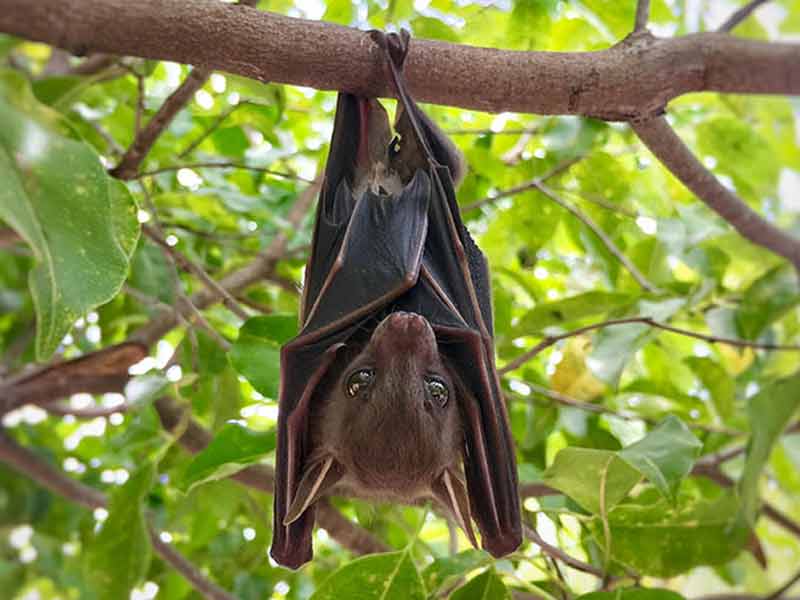
Little Brown Bats
Little Brown Bats are furry and grow between 2 ½ inches to 3 ¾ inches. They have leathery wings with a wingspan of 8 to 11 inches. They are considered dangerous because they can carry the life-threatening rabies disease. Meanwhile, their droppings contain fungi that can cause lung disease in people. Bats roost in attics, soffits, barns, chimneys, sheds, and garages and feed on insects. They can cause a great deal of damage to the properties that they are invading with their urine and feces and carry bugs, ticks, mites, and fleas into your home.
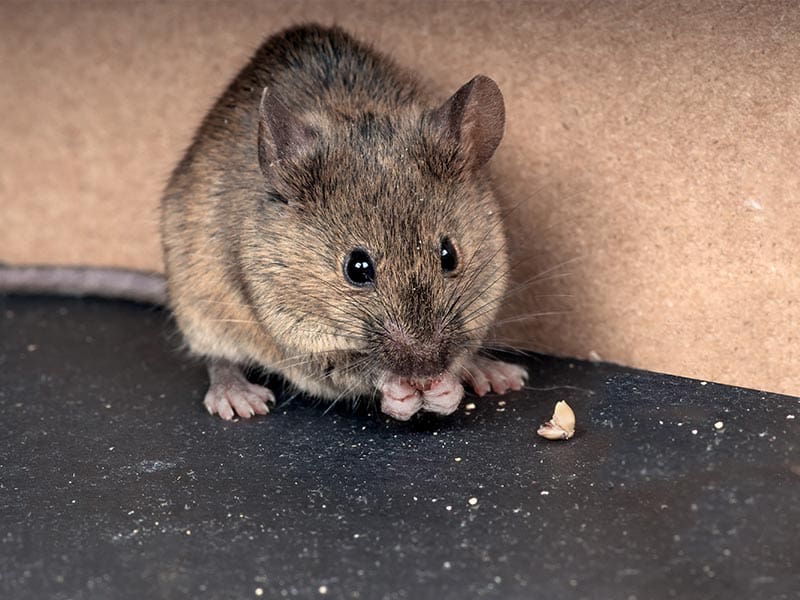
Mice
Adult mice grow to about 5 ½-7 inches and have gray, brown, or black fur with a lighter-colored belly. Mice are a very dangerous pest because they carry and transmit a wide variety of bacteria and diseases, including Salmonella, Leptospirosis, and Hantavirus. They also introduce parasitic pests like fleas, mites, and ticks to your home as well. They will chew pipes, wires, insulation, drywall, and other building materials to keep their incisors at a manageable length.
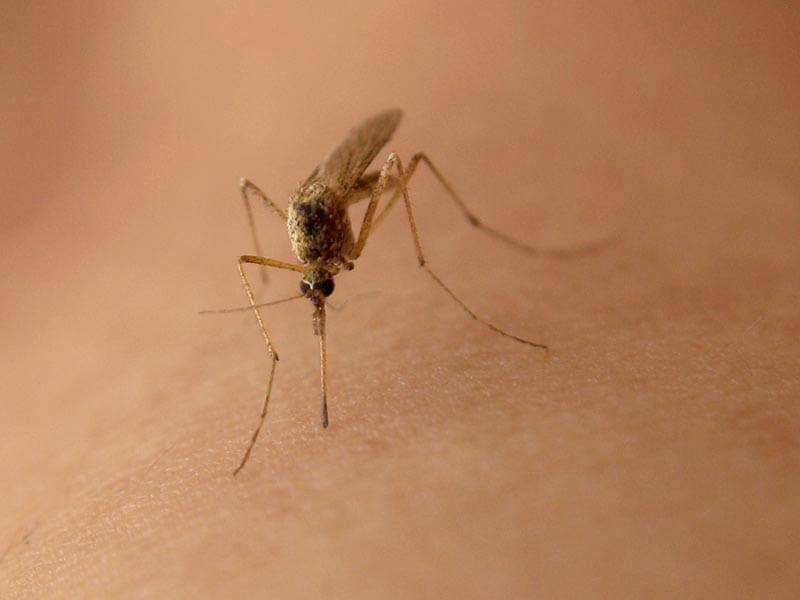
Mosquitoes
Mosquitoes are vectors of numerous diseases including malaria, yellow fever, dengue, encephalitis, Chikungunya, West Nile virus and Zika. Wearing an insect repellent containing DEET or another EPA-registered ingredient is the best way to prevent mosquito bites. It’s also important to take steps to prevent mosquito breeding grounds around your home, since mosquitoes can lay eggs in as little as a half an inch of water. If you are concerned about mosquito control on your property, contact us today for advice on how to get rid of mosquitoes.
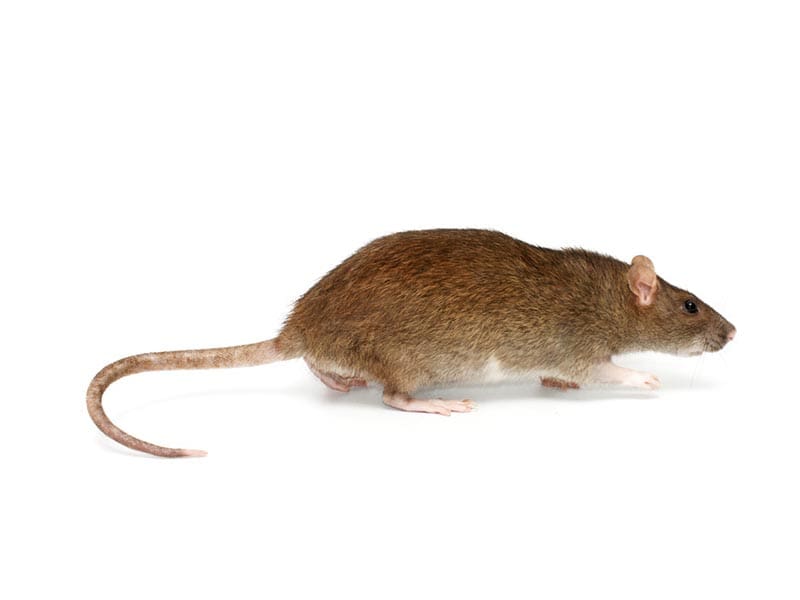
Norway Rats
Adult Norway Rats grow to about 7-9 inches, and their tail adds another 6-8 inches and has scruffy brown hair with black sprinkled in. Much like mice, they carry and transmit bacteria and diseases through their urine, feces, and saliva including trichinosis and salmonellosis. They will chew through pipes, flooring, electrical wires, and drywall and build burrows in sidewalks, decks, garages, sheds, and foundations.
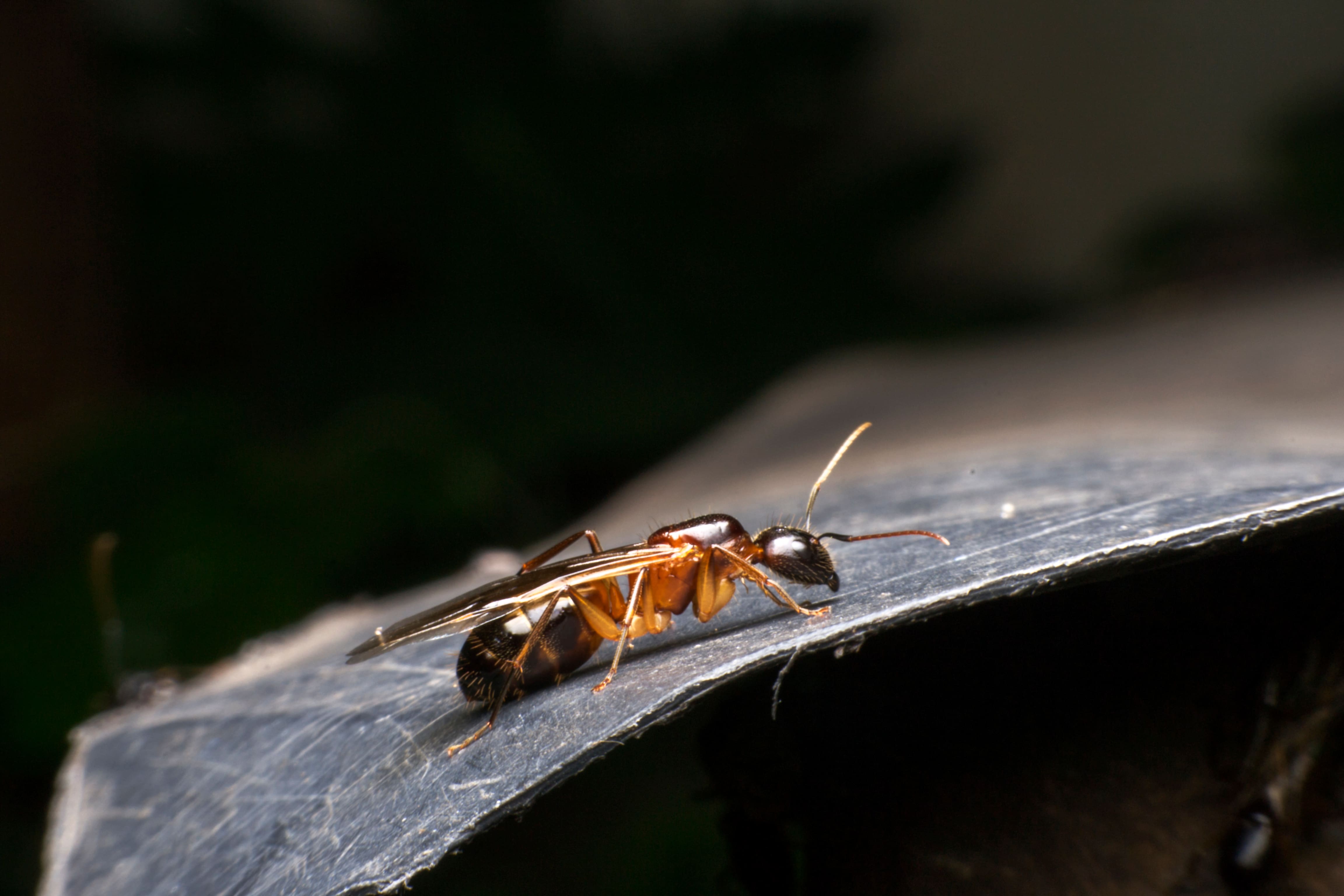
Odorous House Ant
What distinguishes an Odorous House Ant from others is the very potent and foul-smelling odor it emits when crushed. It can be described as a rotting coconut. These ants grow to about an eighth of an inch and are dark brown to black in color. They pose no significant health risk to people or pets and aren’t known to sting or bite. However, they can invade your home in large numbers and contaminate your food sources. If the outside comes too wet for their liking, they will make their way indoors through small cracks, crevices, and openings.
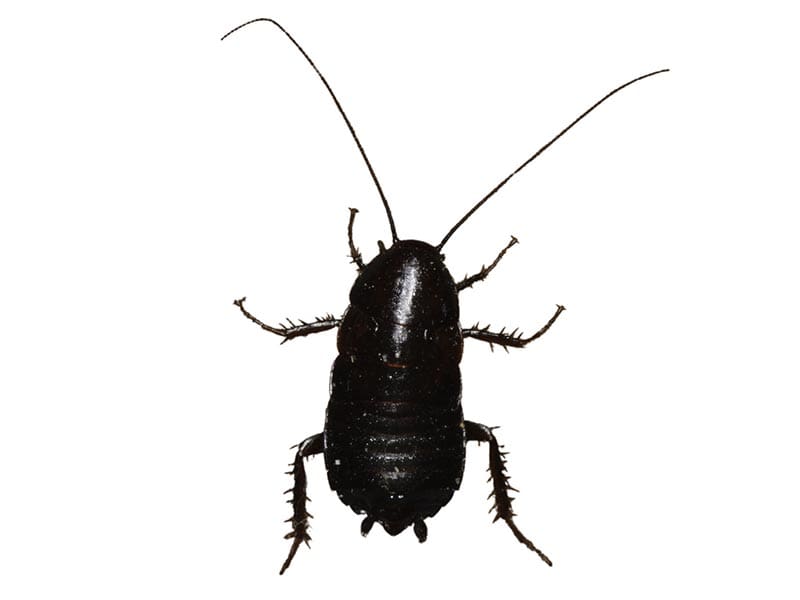
Oriental Cockroaches
Oriental Cockroaches grow to about one inch in length, and their body is smooth and shiny black in color. They are not capable of flight. They can be identified by the powerful, musty, foul-smelling odor they emit. They can bite, but very rarely bite people. They are considered very dangerous as allergens from their shed skins and feces can trigger allergic reactions and asthma attacks in people. They also carry dangerous bacteria, human pathogens, and parasites on their bodies.
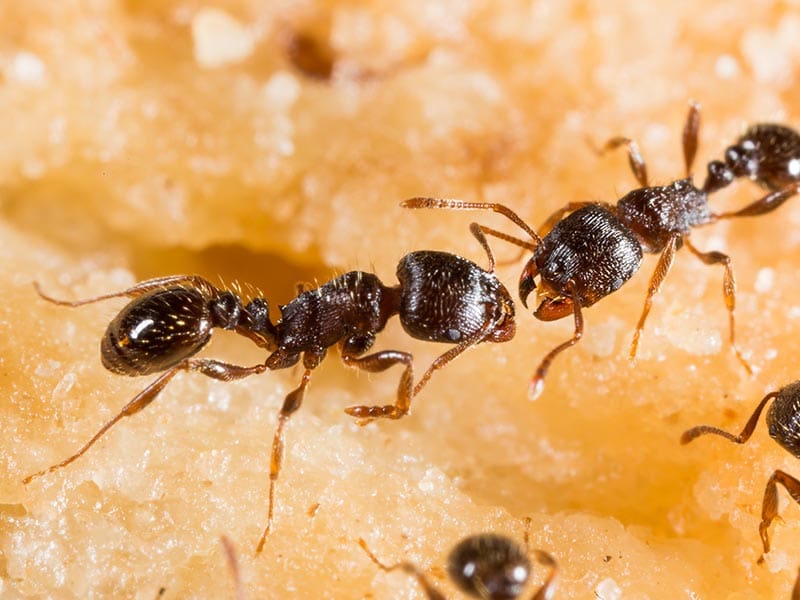
Pavement Ants
Pavement Ants vary from dark brown to black in color and grow to about three-eighths inch to an eighth inch in size. They have stingers, but they aren’t aggressive and rarely use it. They can be found along and in cracks of driveways, under and along sidewalks, under concrete slabs, and underneath foundations. However, they will nest behind walls in the insulation, under floors, in crawl spaces, or in ground-level masonry walls.
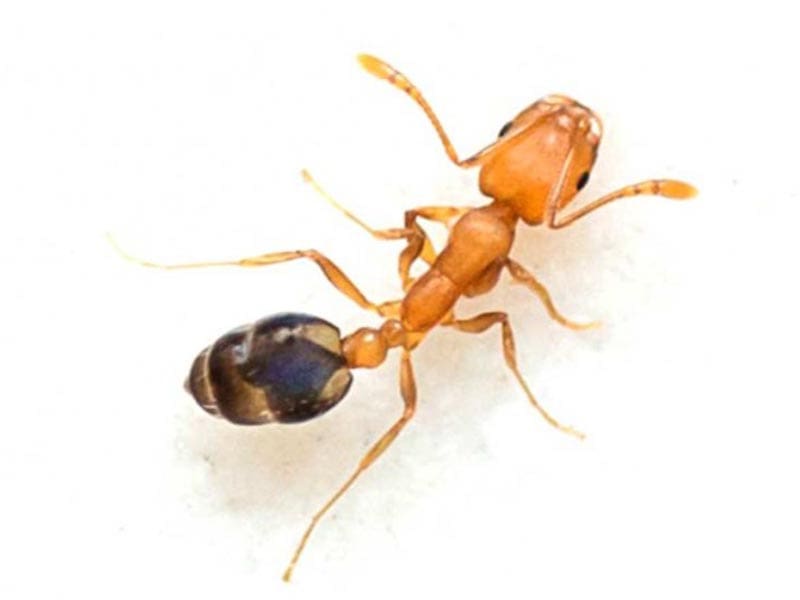
Pharaoh Ants
Pharaoh Ants are a pale red or yellowish-brown and grow to about one-sixteenth inch in size. They are considered a dangerous species because they contaminate food sources, they “bud” allowing them to build multiple colonies on a property or home, and they carry and transmit diseases including salmonella and Streptococcus. This is one ant species that prefers to nest inside rather than outside where it is warm and humid and close to food sources.
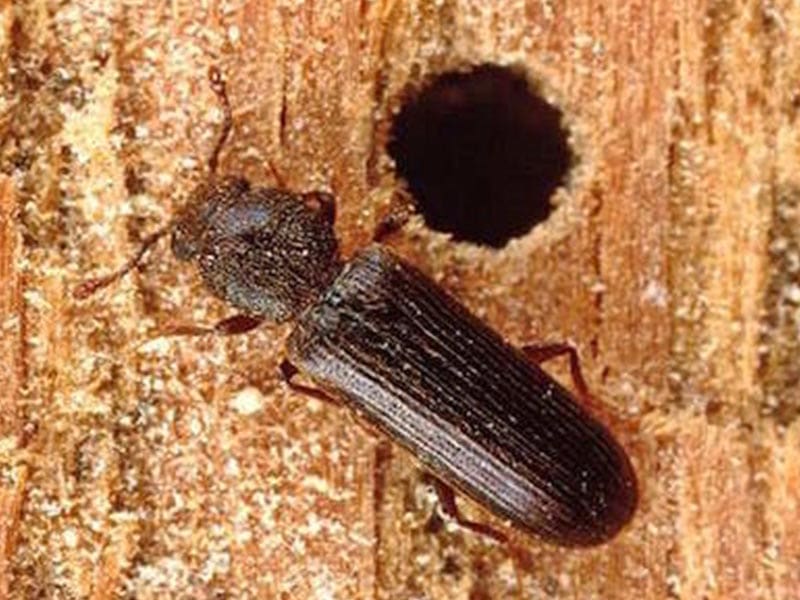
Powderpost Beetles
Powderpost Beetles are wood-boring beetles that can cause structural damage. They grow between one-eighth to three-quarters inch long with a black body. Their larvae create narrow, meandering tunnels in wood as they feed. Infestations are discovered after noticing small, round holes in the wood surface. Imported tropical hardwoods are especially prone to attack.
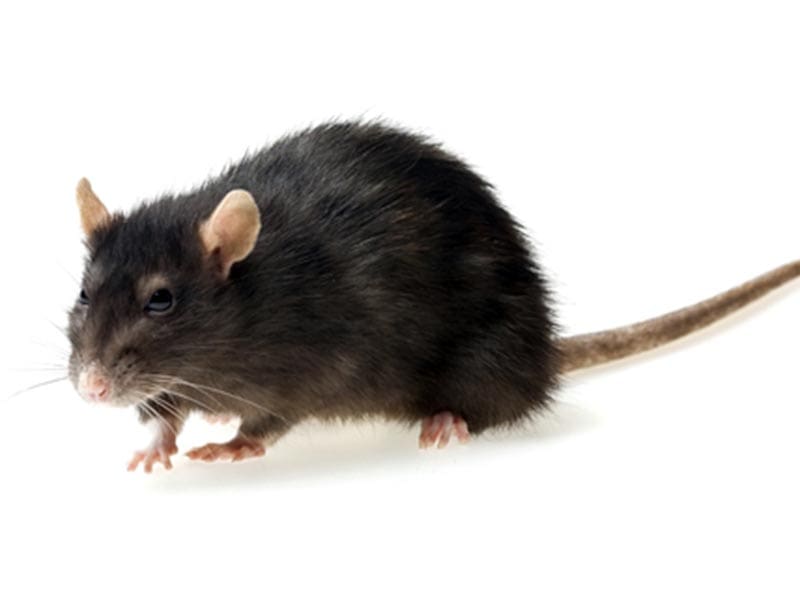
Roof Rats
Adult roof rats grow to about 6-8 inches with their tail adding another 6-8 inches. They are brownish black with a gray, white or black underside. Roof Rats differ from Norway Rats in that they are usually found occupying attic spaces, not basements or crawl spaces of homes. They are extremely dangerous because they contaminate food sources and spread their urine and feces throughout your home. They also carry Salmonellosis and dysentery along with other dangerous diseases and will chew through drywall, flooring, siding, wire, pipes, and furniture.
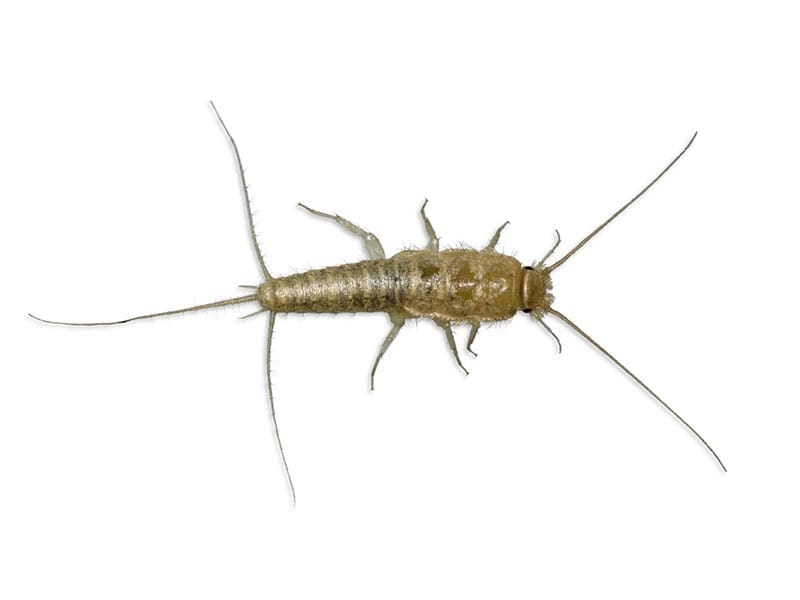
Silver Fish
Silverfish are a type of wingless moth that is brownish-gray body covered in shimmering silver scales. They are quick movers and grow to three-quarters inch in size. They are not directly dangerous to people or pets but will contaminate food sources. They feed on paper, glue, wallpaper, fabrics, other dead insects, and pantry items. They emerge at night to forage for food and hide in dark cracks, crevices, and corners of your home during the day.
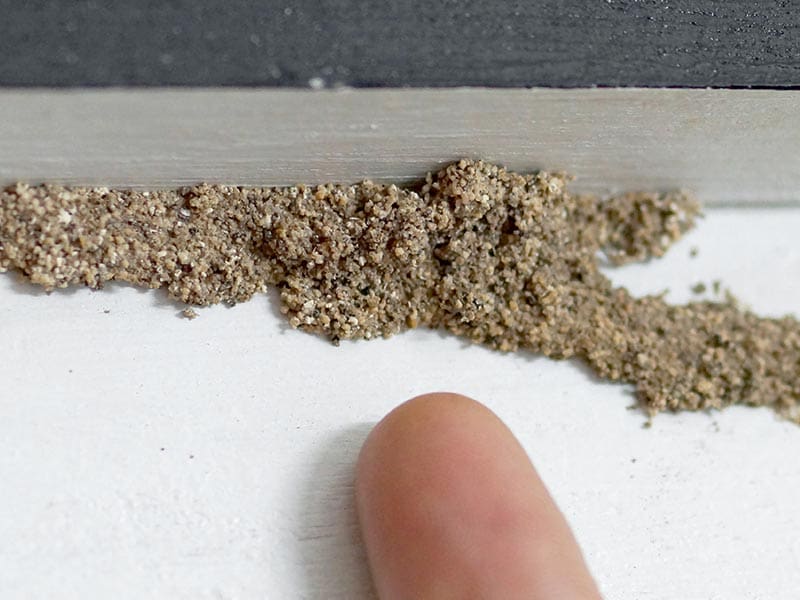
Subterranean Termites
Subterranean Termites live in soil beneath and around homes and enter through wood that touches the ground and cracks in concrete walls and foundations. They are one-eighth to three-eighths of an inch in length, and workers are cream-colored and pale, while the soldiers are light color with brown heads. They attack wood products, including structural timbers and woodwork in your home or business.
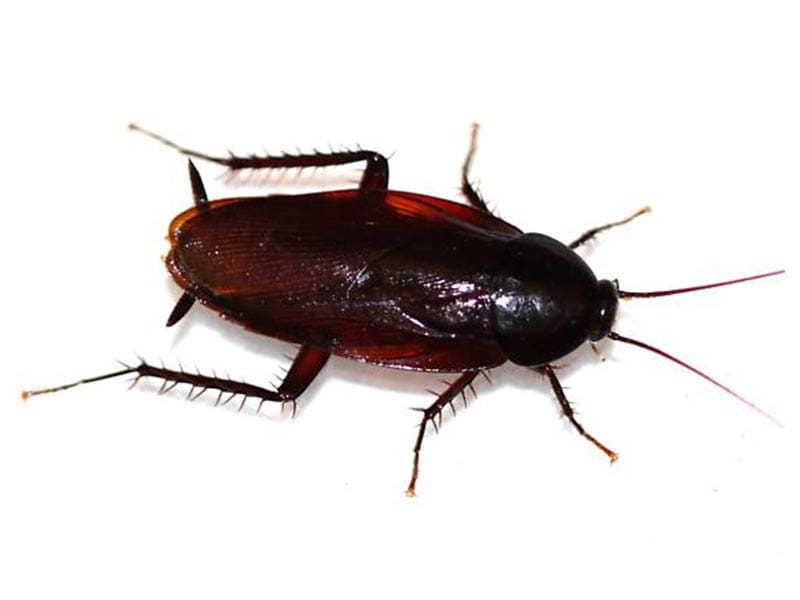
Smokey Brown Cockroahces
Smokey Brown Cockroaches are slightly smaller than their American Cockroach counterpart and grow to only 1 ½ inches. They are dark brown and are considered strong fliers. Like all other species of cockroaches, they are extremely dangerous to have inside your home as they spread bacteria, parasitic worms, and human pathogens. Their shed skin and feces can trigger allergies and asthma attacks, especially in small children.
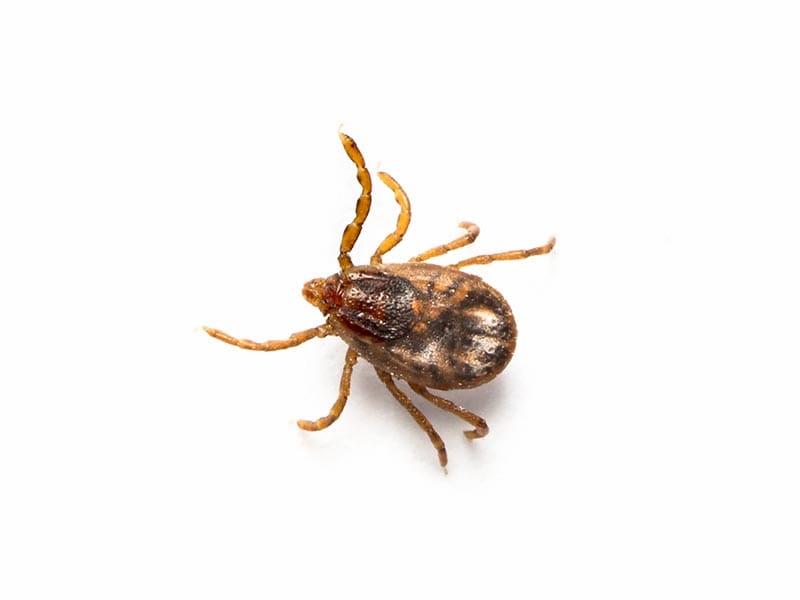
Ticks
Ticks are extremely dangerous. They can carry and spread Lyme disease, Babesiosis, Ehrlichiosis, and Anaplasmosis. They are about the size of a sesame seed, and their body features a rust orange lower half and a black top half.
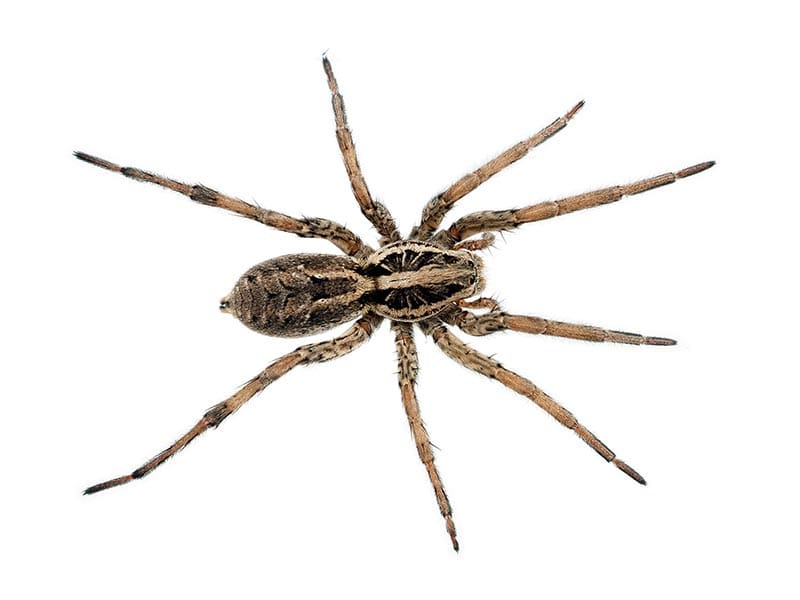
Wolf Spiders
Wolf Spiders are black or dark brown with cream, gray, or yellow markings. They grow between a quarter inch to 1 ½ inches in size. They are considered docile and only bite people if they are handled directly, or accidentally brushed up against. They are venomous, but the venom is no strong enough to cause health risks, but it could cause a reaction in some people that will require medical attention. They burrow and nest underneath rocks, woodpiles, leaf piles, and grass piles. They will chase prey indoors and run along walls, in cabinets, in boxes, and underneath of furniture.
To get started, submit the form below or call 760-743-2847
W.A. Stone Termite & Pest Control Inc.
License #: PR 3032
330 Rancheros Dr. #110 San Marcos, CA 92069
Business Hours
Monday-Friday
9:00 AM - 4:00 PM
